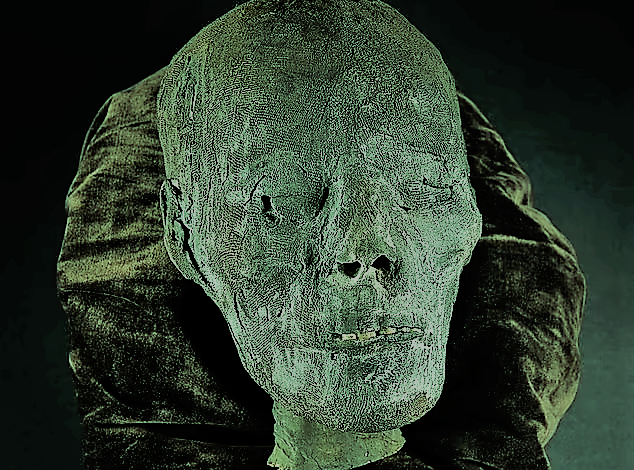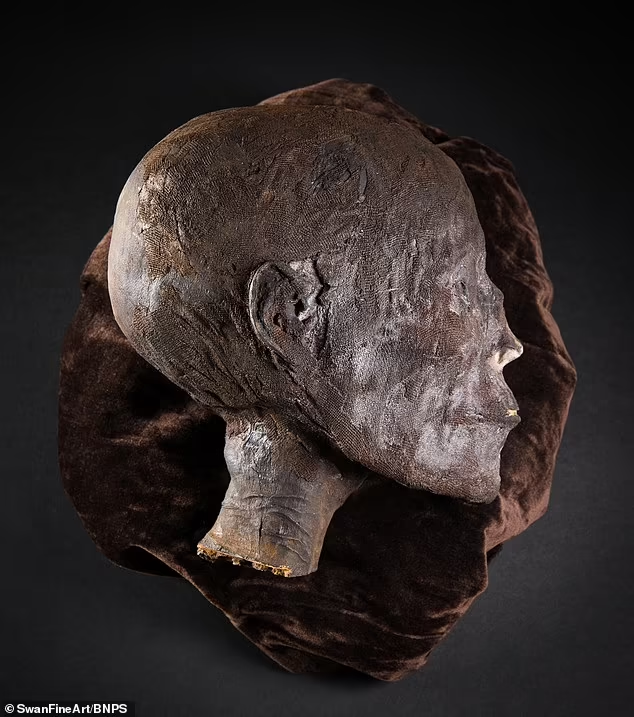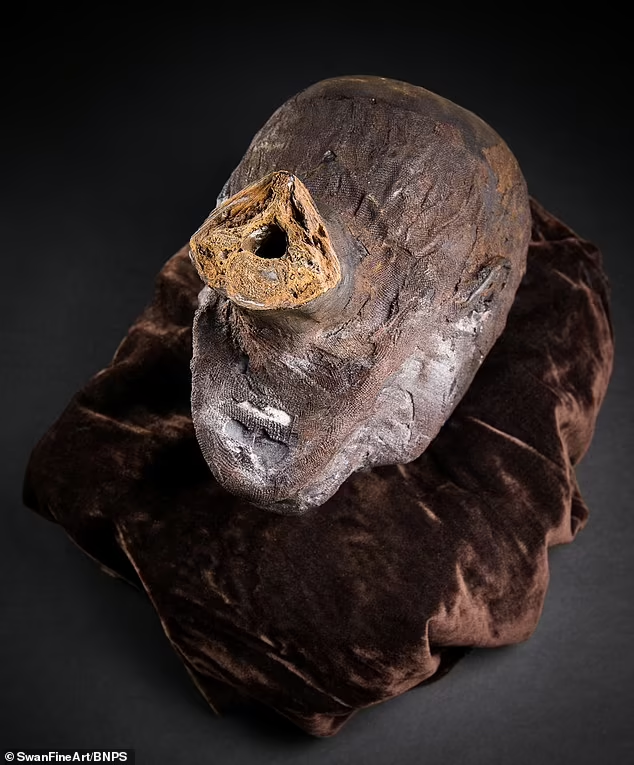
A rare 2,800-year-old Egyptian mummy’s head brought to the UK by a British soldier during World War I is up for sale at an auction, the British Daily Mail newspaper reported.
The newspaper said that the artifact, which has been kept in a treasury for decades, is now valued at 20,000 sterling pounds.
The head remained in the possession of the family of the soldier for a century, where it was kept under a glass dome for safekeeping.
But because some visitors didn’t like looking at the artifact, which has been carbon-dated to between 800 BC and 750 BC, the head ended up being put away in a cupboard.
Now the mummy is being sold by a descendant of the soldier, who chose not to be identified.
The anonymous seller in Oxfordshire, southeast the UK, said it was kept in the closet because it was not made available to everyone.
The possessor of the head explained, it would be best for it to go to a place where it could be studied and appreciated.
He added that if it was not sold at the Swan Fine Art auction on Wednesday, he would probably loan it to a museum, where it could be displayed.
“It’s very rare to see an Egyptian mummy head from the ancient world at public auction, particularly a piece with such superb preservation,” Matthew Hull, who specializes in the Swan Fine Art auction, said.
The head for sale was mummified during the Third Intermediate Period of ancient Egypt 1070-664 BC. This period began with the death of Pharaoh Ramses XI in 1070 BC, and was seen as an era of decline and political instability.

This coincided with the collapse of civilizations in the late Bronze Age in the ancient Near East and eastern Mediterranean.
Mummification in ancient Egypt involved removing the internal organs of a corpse, drying the body with a mixture of salts, then wrapping it in a cloth soaked in a balm of plant extracts, oils and resins.
Ancient mummies are believed to have been preserved naturally by being buried in dry desert sand and were not chemically treated.
However, Russian scientists believe that different conditioners were used to keep the hair in shape at the time than the formulations that were used on the rest of the body.
The hair was treated with a conditioner made from a mixture of cow fat, castor oil, beeswax, pine gum and a drop of pistachio essential oil as an additional option.

While the Egyptian pharaohs were mummified and buried in elaborate tombs, members of the nobility and officials often received the same treatment.
Occasionally, ordinary people would also do this, but since the operation was so expensive it was beyond the reach of most people.




